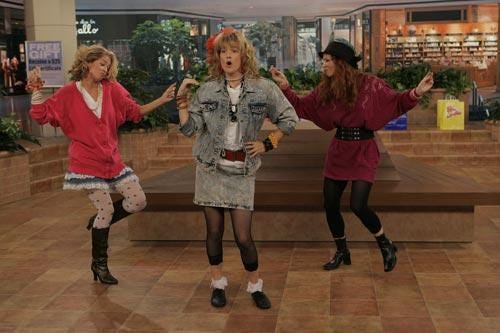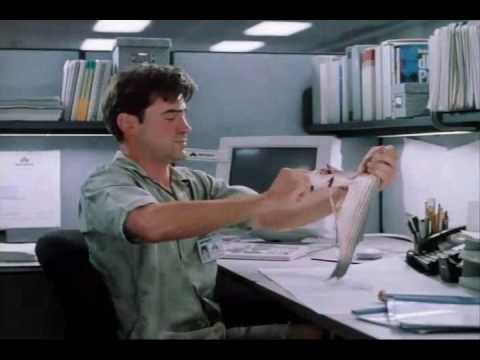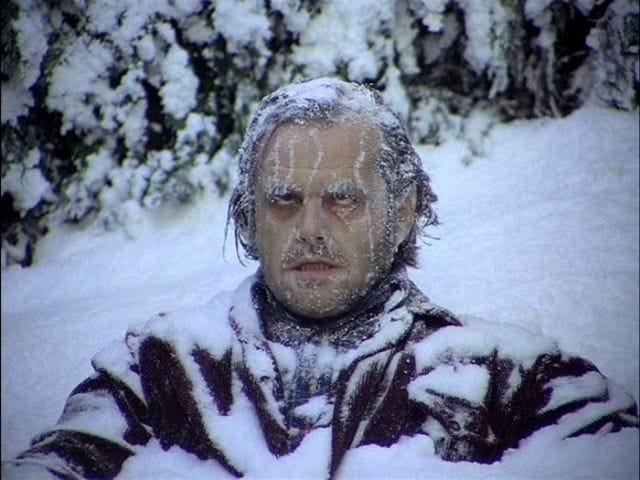So What, Who Cares (vol 2, issue 98) What the end of the mall rat means for your neighborhood
Hello! Someone has thoughtlessly relocated my island paradise to the surface of the sun, so your summer beverage suggestions were all very welcome. Here's a round-up:
@ajlburke: my new fav summer drink is Stiegl Radler. It's a refreshing mix of grapefruit and beer and at only 2.5% I can drink it all day.
@nerddotis: " My favorite summer beverage is my blend of iced tea. I use one bag of Kroger house brand passionfruit and papaya black tea and two bags of Bigelow Decaf Lemon Lift. I hot brew a 1.5 quart batch in my Takeya pitcher, then add ice to the top. By brewing it too strong, I can pour each serving over a full cup of ice and it still isn't too weak."
From sbvasconcellos: " My favorite summer drink is an Arnold Palmer - half lemonade, half iced tea!"
From Allison: "vodka and watermelon puree with a splash of soda water and a pinch of salt. YUM!!!!!"
From Amy J., who needs to give up the location of that custard shop: " When it's too hot to move, and I still need my caffeine fix....I give into the siren call of the iced caramel machiatto at Starbucks. If I'm back in my hometown, it's chocolate soda time at the local frozen custard drive-in."
From Coleen: "Since I'm doing the Whole30 (or Whole56, as it were), my drink of choice right now is that VitaCoco water with the mango and peach over ice. Just sweet enough and super refreshing!"
As for me, there's been a lot of Trader Joe's Candy Cane Green Tea turned into iced tea, and if this blasted heat persists, I'm going to chill a bottle of New Age, then pour some over ice and garnish with a lime slice. Trust me -- the West Street Wine Bar in Reno, NV, where I first had this at the tail end of an afternoon spent swimming in the Truckee river just a few blocks away -- isn't wrong about how good this is.
*
One of the more fascinating stories to unfold over the last decade: People are fleeing from vast, engineered work and retail environments. Thanks to a combination of:
changing recreational behavior (the mall is no longer the only "third space" teens have for hanging out)
retail over-saturation plus the increasing income divide (vol 2, issue 44)
an increased awareness of nature as the brain's low-cost productivity booster
a rise in urbanization as a desirable trait among "brainy professionals"

... the era of hermetic environments of shopping malls and Cold War-inspired office parks is coming to a close.
So what? It's still early, but consider this the triumph of nature over nurture.
People got weirded out over the idea of shopping or working in an environmentally-controlled environment with no natural light or fresh air, and they're leaving. They're exercising choice. When given a choice between a) shopping inside a brutalist box, b) going to an open-air shopping boulevard and hanging around in front of a fountain as they suck down a latte, or c) sitting at home on their front porch and clicking "Buy" on a website, people are moving toward B or C. The surplus of retail space in the U.S. and the rise of e-commerce means that consumers can be picky about where they choose to shop.
As for working? Gwen Wright, Montgomery County, MD, planning director, puts it this way:
"There’s no way to sugarcoat it … It’s not just Montgomery County. In the entire region the office market is not good. That’s just a fact. What [a new report prepared by D.C.-based Partners for Economic Solutions for the Montgomery County Planning Department] says to me is this is not a blip. It’s actually a somewhat fundamental change in how office works and how we’re going to be developing office in the future. We just have to wrap our heads around that, mourn the past and think about the future.”
Who cares? The people who live near these emptying complexes.

When office parks shut down, the value of the property falls. This, in turn, depresses the property values in the immediate area as a whole, reducing the tax base and making it harder for other businesses or residents to get value for their property.
When retailers leave, so do the sales taxes that trickled into the local coffers, funding everything from road repairs to schools. If those businesses go away, governments can try to make up the shortfall by leaning more heavily on residential property taxes, or they can cut budgets.
Some governments are trying a new model, working closely with mall management to revitalize old malls as open-air "lifestyle centers," with a combination of restaurants, retailers and theaters in addition to open space. One such project saw the town offering tax breaks to a developer up front with the understanding that some of the sales taxes from the post-renovation sales would go back to the city, should sales improve.
However, that presupposes the area around the mall is in decent economic shape. Failing malls in failing communities can expect to add to the blight:
“It’s really going to be hard in the next 10 years to knock down that mall and rebuild it into something better because the economics just don’t work,” [president and chief executive of shopping center owner Federal Realty Investment Trust Don] Wood said. A derelict mall in a less-than-ideal market “most likely will just stay there and get worse and worse over the next 20 years.”
But if a community does have the wherewithal to lure developers in for a mall-repurposing project, there's no shortage of purposes for a mall's next life: The Atlantic Monthly notes, "That's the thing about repurposing malls: Because they were built with so much space, they're often a good option for industries looking to expand." Read the piece for examples of malls turned government centers, churches, colleges, residential housing, and hospitals.
As for what happens to places where office parks are turning into abandoned sites? Montgomery County, Maryland, is grappling with that question in the Rock Spring Park area of North Bethesda. The county is beginning work on a master plan:
[R]eevaluating a typical suburban office park with an automotive-oriented street network and large parking garages and surface parking spaces. The proposed amendment will examine opportunities for a new street network; public use spaces and amenities; residential and non-residential uses; sustainable environmental measures; infrastructure needs for the area; and linkages to the proposed transitway.
Stay tuned to see what they decide. They won't be the first municipality to try and revive these little asphalt fiedoms as vibrant, mixed-use developments.
Supplemental reading: I am fascinated by this cityLAB/Gensler report on The Future of Work (pdf). It will go nicely with the latest book in my to-read pile, Cubed: A Secret History of the Workplace, by Nikil Saval
*

Your pop-culture note of the day: ... Will return. I'm off to go sit in a darkened room with a cold beverage and use my Kindle's search function to find all the chapters in Jon Krakauer's Into Thin Air that describe how incredibly cold it is up on Mt. Everest.
What are your take-me-away reads? Share how you escape via the printed (or pixellated) page via Twitter or email.
*
Are there typos? Copyediting is the only editing class I did not earn an A in. And I can't change any typos in the archives. I know. It irritates me too.
Suggestions for links gratefully received -- hit me up via Twitter and email.
Feedback is welcome. Again --hit me up via Twitter and email
Really like this newsletter? TELL A FRIEND TO SUBSCRIBE! Then the next time they go dropping some particularly interesting and insightful line into the conversation, you can smile to yourself because you'll know where they got it from. You're certainly not petty enough to silently mouth, "You're welcome" at them. You'll just stick to a knowing, sphinx-like smile.


